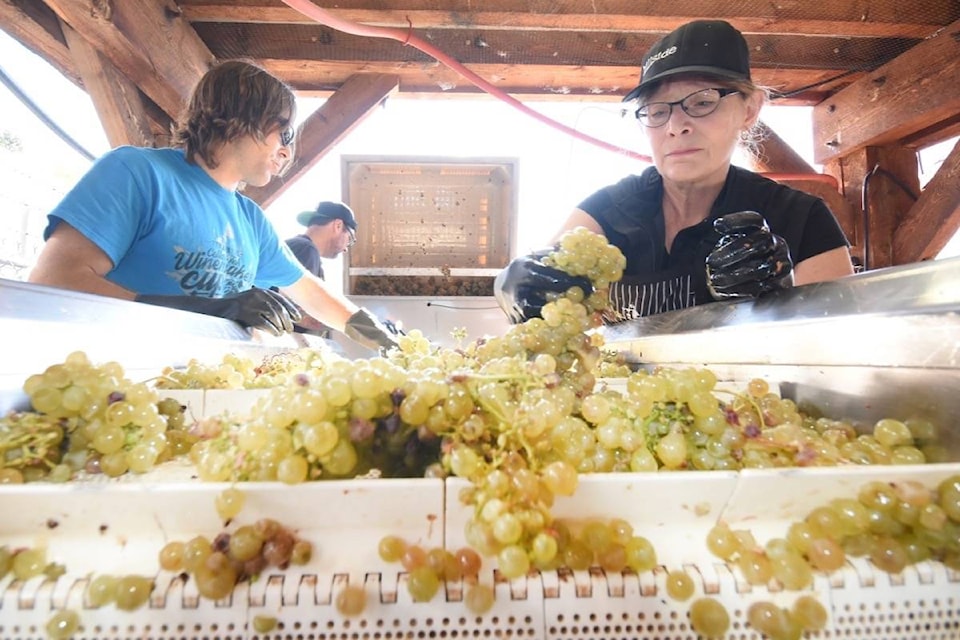With a winter heavy with precipitation this year — the white stuff on the ground causing your car to slip around has been keeping the vines safe to produce healthy grapes, according to a local vintner.
Contrary to what some might think, a pile of freezing cold snow covering the vines does not necessarily mean bad news for the vineyards, as local wine produces gear up for another season. In fact, Tony Holler with Poplar Grove said the snow protects the vines from frost on the ground.
“The most sensitive part of the grape bunches is the roots that are glued to the surface, and obviously the snow protects them,” he said. “It has a positive effect in preventing frost going deep into the ground. It’s like an insulator.”
Related:
More generally, Holler said he is optimistic about the year coming up, because of the lack of any significant deep freezes, beside the coldsnap last week, where it dipped to the high teens.
“That’s really been the only cold weather we’ve had, because at our vineyards in Penticton, I think the coldest we had was -8 or -9 before that. So really the vines should be able to quite easily tolerate that -16, -17 at this time of the year,” he said.
“The only thing you ever worry about is if the vines start waking up and then you get a cold snap. That can be very damaging actually to the plant itself. But so far, I think we’re looking pretty good, is what I say.”
Indeed, the weather forecast from Environment Canada appears to indicate next week will be much the same as this week, which Holler said is about perfect.
Related:
“The other thing that we always worry about is water and all that sort of stuff, but it looks like the snow packs in the mountains are high again, this year,” Holler said.
That’s a big difference from last year, when at this time vintners were getting worried about a dry early season for the crop, before heavy precipitation began falling at the dead end of winter and through the spring.
“The Okanagan depends on the snowpack in the alpine to make sure we get enough water all year long,” Holler said.
Holler said his vineyards in Osoyoos have already begun pruning, with the annual fear of an early spring, which can make for a tight timeline to get crops ready for the growing season to start in earnest.
Related: Bad weather increases number of accidents
“That’s what we really worry about is if we get too early a spring, we really need to get on top of the work,” he said. “So far this year, I think people would argue that it’s a pretty normal winter. We’re pretty optimistic about the crop and the health of the plants, because as I mentioned the winter hasn’t been a brutal winter.”
As for the wines coming out from last year’s smoky summer, Holler said the trend among wineries is some solid grapes from a tight crop.
“We noticed that our crop estimates were off, and we harvested probably 15 per cent less fruit than we would have in a typical year,” he said. “But the quality of the fruit was exceptional.”
That, he said, is because when there are fewer fruits competing for nutrients, those that do show up on the vine, tree or bush tend to grow bigger and juicier.
He also pushed back against the notion of a record-setting summer of wildfires infusing a smoky taste into the wines.
Related:
“It can. What we observed was that if you get ash falling in the vineyards and the ash settles into the bunches, that seems to have a pretty dramatic effect on flavour,” Holler said.
“Certainly, within the South Okanagan, we really had no ash. We had lots of smoke, but I think the fires were far enough away from us, so the ash wasn’t falling anywhere near where we were. And I tasted all the 17 wines, and there’s no smoke taint.”
But a UBC Okanagan study published in January showed that Cabernet Franc grapes exposed to simulated forest fire smoke quickly absorbed volatile phenols — chemicals in the smoke that can give wine an off-putting smoky flavour and aroma known as smoke taint — and held onto those chemicals long after the smoke was gone.
Related:
“Once there, the concentrations remained unchanged in the grape throughout its development. Only when the grapes were fermented into wine could the smoky-flavoured volatile phenols be detected,” PhD student Matthew Noestheden said at the time.
The only way to know for sure is to find a willing participant for a taste test — and that likely won’t be too difficult to find.
dustin.godfrey@pentictonwesternnews.com
Like us on and follow us on .




